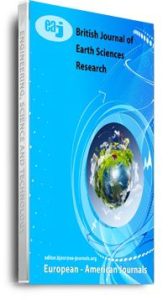There has been no supply of pipe borne water to Ekiti State University. Majority of students/people living around the university environment depend on water from hand dug wells for their water needs. Physical and chemical evaluation of twenty hand dug well water employing standard method was carried out with a view to characterize and ascertain their potability. The physical analysis revealed that pH ranged from 6.61—7.84 (av. 7.15) indicating almost neutral water. EC of 20 – 380 (av.89.50) µS/cm and TH of 10.86 – 121.80 (av. 36.49) mg/L CaCO3 revealed soft water with low dissolved solutes. Result of the chemical analysis showed that Ca2+ ranged from 2.28 – 38.74 (av.9.57) mg/L, Mg2+ from 0.51 – 13.13 (av. 3.06) mg/L, Na+ from 1.52 – 88.68 (av.18.18)mg/L and K+ from 1.32 – 10.92 (av. 4.00) mg/L. Similarly, concentrations of HCO3– ranged from 15.25 – 61 (av. 36.60) mg/L, SO42- from 4.60 – 19.60 (av. 10.70)mg/L, Cl– between 72 and 432 (av. 160.65)mg/L and NO3– from 0.11 – 4.03 (1.58)mg/L. Well water samples analyzed in the study area exhibited an overall ionic dominance of Na+ > Ca2+ > K+ > Mg2+ for the major cations on the one hand and Cl– > HCO3– > SO42- > NO3– on the other hand. The chemical concentrations as observed in the chemical analysis indicated that all the chemical parameters are within approved WHO standard for drinking water except Cl– that exceeded the value in few locations signifying localized anthropogenic contamination. Well water samples analyzed in the study area exhibited an overall ionic dominance of Na+ > Ca2+ > K+ > Mg2+ for the major cations on the one hand and Cl– > HCO3– > SO42- > NO3– on the other hand. The well water were characterized as Na-Cl water type (55%) followed by Ca-Cl (30%) and mixed Ca-Mg-Cl type (15%). The research indicated that the well water is soft, low mineralized and potable.
Keywords: Anthropogenic Contamination, Dissolved Solutes, Hand Dug Well, Pipe Borne Water, Potability

